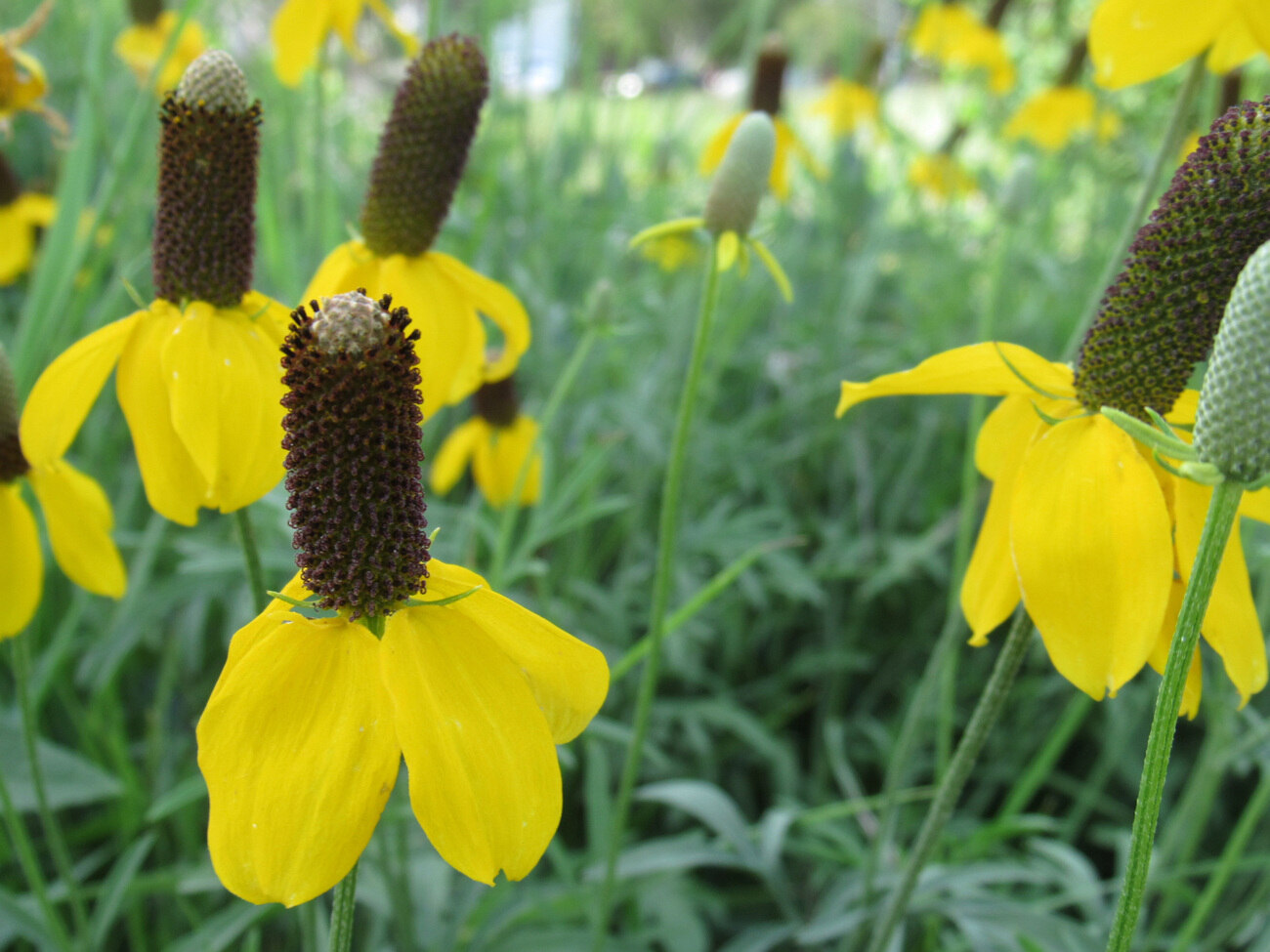
The Prairie Coneflower, also known as the Ratibida columnifera, is a vibrant and enchanting plant that is native to the prairies of North America. With its distinctive daisy-like appearance and long, cone-shaped center, this flower is a true delight to behold. However, there is much more to this perennial plant than meets the eye. In this article, we will uncover 13 surprising facts about the Prairie Coneflower that will leave you amazed and eager to learn more about this fascinating species. From its medicinal uses to its resilience in the face of harsh conditions, you’ll discover why the Prairie Coneflower is a beloved favorite among gardeners and plant enthusiasts. So, let’s dive in and explore the exciting world of the Prairie Coneflower!
Key Takeaways:
- Prairie Coneflower is a resilient, low-maintenance plant that attracts pollinators and provides food for birds. Its colorful blooms and cultural significance make it a beautiful addition to any garden.
- With its medicinal properties, drought tolerance, and deer resistance, Prairie Coneflower is a versatile and valuable plant. It’s easy to grow and adds vibrant color to landscapes while supporting local wildlife.
Prairie Coneflower is native to North America
The Prairie Coneflower, also known as Ratibida columnifera, is a stunning flowering plant that is native to North America. It can be found in various regions across the continent, from the prairies of Canada to the grasslands of the United States.
It belongs to the sunflower family
The Prairie Coneflower belongs to the Asteraceae family, which includes other well-known plants such as sunflowers and daisies. This family is characterized by its composite flowers, which are made up of numerous tiny individual florets packed closely together.
The flowers have a unique cone-shaped center
One of the most distinctive features of the Prairie Coneflower is its cone-shaped center, which is surrounded by vibrant yellow petals. This cone is composed of disk florets and serves as a central hub for pollinators like bees and butterflies.
Prairie Coneflower attracts a wide range of pollinators
Due to its bright yellow petals and nectar-rich center, the Prairie Coneflower attracts a diverse array of pollinators. Bees, butterflies, and even hummingbirds are commonly observed buzzing around these beautiful flowers, playing a crucial role in their pollination process.
It is a hardy perennial plant
Prairie Coneflower is a hardy perennial plant, meaning it can survive for multiple years and bloom again each growing season. This makes it a popular choice for gardeners who want a low-maintenance, long-lasting addition to their flower beds or wildflower meadows.
The plant has medicinal properties
Traditional Native American tribes recognized the medicinal properties of the Prairie Coneflower. It was commonly used to treat various ailments, including headaches, fevers, and gastrointestinal issues. Today, it is still commonly used in herbal remedies and natural medicine.
Prairie Coneflower is drought-tolerant
One of the remarkable characteristics of the Prairie Coneflower is its ability to withstand drought conditions. It has long taproots that enable it to access deep soil moisture, making it highly resilient even in periods of little rainfall or water scarcity.
The plant is deer-resistant
Unlike many other plants, Prairie Coneflower is not a favorite snack of deer. Its slightly bitter taste and the strong fragrance of its leaves deter deer from grazing on it, making it an excellent choice for gardens in areas with high deer populations.
Prairie Coneflower comes in various colors
While yellow is the most common color for Prairie Coneflower, it also comes in a range of other hues. Some varieties display red, orange, or even bicolor flowers, adding a splash of vibrant color to any landscape.
It is an important source of food for birds
The seed heads of the Prairie Coneflower provide a valuable food source for birds during the fall and winter months. Various species, including sparrows, finches, and chickadees, feed on the nutritious seeds, helping to sustain them through the colder seasons.
Prairie Coneflower is easy to grow from seed
Whether you are an experienced gardener or a novice, Prairie Coneflower is relatively easy to grow from seed. Simply sow the seeds in well-drained soil, keep them moist, and watch as these resilient plants sprout and bloom in the following growing season.
The plant has cultural significance
Prairie Coneflower holds cultural significance for some Native American tribes, who consider it a sacred plant. It is often used in traditional ceremonies and is regarded as a symbol of spirituality and strength.
Prairie Coneflower is a resilient plant
Adapted to various growing conditions, Prairie Coneflower is a resilient plant that can survive in both sunny and partially shaded locations. It can thrive in a range of soil types, making it a versatile choice for gardens across North America.
These 13 surprising facts about Prairie Coneflower showcase the beauty, resilience, and ecological importance of this remarkable native plant. Whether you are a gardener, nature enthusiast, or simply appreciate the wonders of the natural world, the Prairie Coneflower is an enchanting addition to any landscape.
Conclusion
In conclusion, the Prairie Coneflower is a fascinating plant with a rich history and impressive characteristics. From its vibrant yellow blooms to its medicinal properties, there is much to discover about this remarkable flower. Whether you are a botanist studying its ecological importance or a gardener looking to add a pop of color to your landscape, the Prairie Coneflower is sure to captivate your attention. With its ability to attract pollinators and thrive in diverse environments, this perennial is truly a hidden gem in the world of plants.So, next time you come across a Prairie Coneflower, take a moment to appreciate its beauty and remember these thirteen surprising facts about this incredible species. Your admiration for this native wildflower will only grow deeper as you uncover even more secrets about its characteristics, history, and benefits.
FAQs
Q: What is the scientific name of the Prairie Coneflower?
A: The scientific name of the Prairie Coneflower is Ratibida columnifera.
Q: Where can I find the Prairie Coneflower?
A: The Prairie Coneflower is native to North America and can be found in the prairie regions of the United States and Canada.
Q: Does the Prairie Coneflower have any medicinal properties?
A: Yes, the Prairie Coneflower has been traditionally used by Native Americans for its medicinal properties, including its ability to treat various ailments such as fever, sore throat, and gastrointestinal issues.
Q: Is the Prairie Coneflower a good plant for attracting pollinators?
A: Yes, the Prairie Coneflower is highly attractive to bees, butterflies, and other pollinators. Its vibrant yellow blooms and abundant nectar make it a favorite among these beneficial insects.
Q: Can I grow Prairie Coneflowers in my garden?
A: Absolutely! Prairie Coneflowers are excellent additions to any garden. They are relatively low-maintenance and can thrive in a variety of soil types, as long as they receive ample sunlight.
Q: Are Prairie Coneflowers endangered?
A: While the Prairie Coneflower is not currently classified as endangered, habitat loss and other environmental factors pose threats to its long-term survival. Conservation efforts are important to ensure the preservation of this beautiful wildflower.
Q: How long do Prairie Coneflowers bloom?
A: Prairie Coneflowers typically bloom from early summer to early fall, providing a burst of color and beauty to the prairies during this time.
Q: Can I propagate Prairie Coneflowers from seeds?
A: Yes, Prairie Coneflowers can be easily propagated from seeds. Collect the seeds in late summer or early fall, and sow them in well-draining soil in the garden or pots. They should germinate within a few weeks.
Q: Are Prairie Coneflowers deer-resistant?
A: Yes, Prairie Coneflowers are often considered deer-resistant due to their somewhat bitter taste. However, in times of scarcity, deer may still nibble on them.
Q: Are Prairie Coneflowers invasive?
A: No, Prairie Coneflowers are not considered invasive. They are native wildflowers that play an important role in maintaining the biodiversity of prairie ecosystems.
Q: How tall do Prairie Coneflowers grow?
A: Prairie Coneflowers can reach a height of 2 to 4 feet, depending on growing conditions and individual plant health.
Q: Can I grow Prairie Coneflowers in containers?
A: Yes, Prairie Coneflowers can be grown in containers. Ensure that the container has good drainage and provide enough space for the plant’s roots to grow.
Q: Are Prairie Coneflowers drought-tolerant?
A: Yes, Prairie Coneflowers are known for their drought tolerance. Once established, they can survive periods of dryness with minimal water requirements.
Q: How do I attract more pollinators to my Prairie Coneflowers?
A: To attract more pollinators, ensure that your Prairie Coneflowers are planted in a sunny location and provide a diverse array of flowering plants nearby. Pollinators are attracted to a variety of colors and shapes, so create a pollinator-friendly garden with different types of flowers.
Was this page helpful?
Our commitment to delivering trustworthy and engaging content is at the heart of what we do. Each fact on our site is contributed by real users like you, bringing a wealth of diverse insights and information. To ensure the highest standards of accuracy and reliability, our dedicated editors meticulously review each submission. This process guarantees that the facts we share are not only fascinating but also credible. Trust in our commitment to quality and authenticity as you explore and learn with us.


